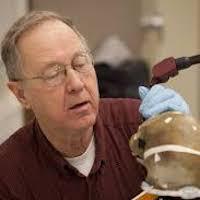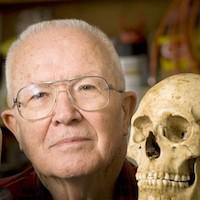
Farheen Gani
Law enforcement professionals may be quick to reject the storylines in procedural crime television shows where evidence is gathered and analyzed seamlessly, and arrests and convictions are made within days. While the shows are entertaining and generally satisfying to see applied science in action, they rarely realistically showcase the intricacies of forensic science.
At best, analysts might be able to fully process evidence from a major crime in a few weeks. More likely, it could take a team of scientists months to make it through all the backlogs of other priority projects, and then even longer for a suspect to see a courtroom, let alone a jail cell. Then again, longtime forensic specialists say the most fascinating cases take years, even centuries, to be fully resolved.
For instance, a team of forensic archeologists recently examined the remains of England’s King Richard III to verify that the bones in his grave were his and if his death in the late 1400s was due to battlefield wounds, according to popular belief. Within the forensic community, there is a definite sense of curiosity and eagerness about the value of re-approaching older open cases with fresh eyes and new investigative tools. Crimes that baffled detectives when they occurred or were poorly investigated the first time may benefit from outside observers and modern investigative practices. The obsession with the nearly 150-year-old Jack the Ripper murders and the quest to find the murderer’s identity even has a name in forensic science: Ripperology.
Forensic specialists may appreciate that, while there is often much academic interest in examining unsolved mysteries or cold cases (i.e., open cases for crimes that have not been solved or are not currently being investigated), there is also less of a ticking clock or public pressure to come up with an airtight solution. Even a “fairly certain” conclusion may not be legally binding but can still provide closure to surviving family members or, in some cases, eliminate a cloud of suspicion for people wrongly accused, charged, or convicted.
Continue reading for examples of how forensic science has been used to provide a second look at mysteries of the past, as well as three current experts working on unsolved crimes and accidents.
In the early 1980s, about 40 bodies were found dumped in remote locations around the greater Seattle-Tacoma area. Many victims had ties to prostitution, and some had been dead for several years.
Law enforcement was baffled for more than a decade, even with a large multi-agency task force working full-time on the case. Traditional investigative methods were employed, including interviews, criminal profiling, surveillance, consultations with convicted serial killers, reward offers, and undercover sting operations. These efforts led to several possible suspects who were heavily interrogated, polygraph tested, and searched. Despite the time and resources dedicated to cracking the case, investigators never felt that any of the suspects entirely fit the bill, and some of the persons of interest even began complaining of harassment.
However, forensic science eventually provided the necessary connection. In the early 2000s, the King County, Washington Sheriff’s Department began conducting polymerase chain reaction tests (PCR) and short tandem repeat tests (STR) to analyze DNA. Lab workers tested the DNA in body fluids found on three victims and compared it to samples provided by some of the persons of interest. A match was found to a saliva sample collected in 1987 when a man named Gary Ridgway was arrested and charged with loitering for prostitution. At that time, DNA testing was not a standard part of law enforcement protocol, but officers still kept a piece of gauze that Ridgway had chewed on in case it might be needed in the future.
At the time of these crimes, Ridgway had been investigated and interviewed many times. He even was asked to a polygraph test, which he passed. However, when he was confronted with the new DNA evidence, he eventually pleaded guilty but avoided a death sentence by providing information about more than 30 other murders.
One of the most famous missing person cases in the 20th century was the disappearance of the famous pilot and her navigator Fred Noonan who set off to fly across the Pacific Ocean in 1937 in an attempt to travel around the world and were never seen again. Speculation ranged from a plane crash in the sea to their capture by Japanese soldiers, and even an alien kidnapping. Several searches took place near where the plane could have landed, but the area is so vast that nothing was ever found.
In 2017, Richard Jantz, a forensic anthropologist from the University of Tennessee decided to try to focus on forensics rather than aerial or radar surveillance for wreckage after 80 years. He analyzed bones that were found near the area where Earhart could have landed or crashed, including a small group of coral islands.
One set of bones had possibilities: though they were analyzed in 1940, and determined to be from a stocky European male, Jantz applied newer skeletal forensic examination techniques. Even though the actual bones were missing, he was able to use official photos, measurements, and notes about them. He determined that they were more likely those of a shorter Caucasian female.
When combined with other items found nearby that matched what Earhart or Noonan would have had, including part of a shoe, clothing, navigation equipment, and an American-made bottle, Jantz theorized that it was more likely to be Earhart in that spot instead of a random female.
This theory cannot be confirmed until other bones are found, but Jantz concluded that until further evidence shows that they are not hers, he will remain convinced that they are Earhart’s. To this day, Amelia Earhart’s disappearance remains one of the greatest unsolved mysteries of all time.
For more than 70 years, a journal of a teenage girl hiding from the Nazis in Holland has helped put a human face to the statistics of the millions of people captured or killed in the Holocaust. Anne Frank’s diary shares her hopes and dreams, for herself and for the world. It is also set against a difficult backdrop where she lived in close quarters with her family above an office, which required everyone to remain quiet during the day.
Frank’s diary provided a snapshot of a few years of her life, which ended a few months later in a concentration camp. She was survived by her father, who felt it was important that her story be shared with the world, which is how The Diary of a Young Girl appeared in the U.S. and Great Britain in 1952 and became an instant best-seller.
While the cause of her death by typhus fever does not require further scientific analysis, forensics is helping to solve other questions, including how and why her family was eventually captured, which has been a mystery to this day.
Retired FBI special agent Vince Panoke and Dutch officials have been examining the details of the Frank family’s time above an office in Amsterdam, including who knew they were there, how they communicated with the outside world, and which motives people could have had to turn them in. Some theories maintain that trusted friends betrayed them; others speculate that police found the location purely by accident.
The diary provides some source material, along with accounts of other families from that time. Panoke said he has access to a list of Dutch Gestapo informants that was not available when the Dutch initially investigated the case in 1948 and again in 1963. The team also plans to use other advanced investigative techniques. Findings are expected to be complete in 2019.
The military coup in Chile against President Salvador Allende in 1973 and the subsequent civilian oppression left thousands dead or missing. This tragedy has led to a worldwide call for forensics professionals who can help find unmarked graves, identify remains, and match them to the lists of people who have been declared missing. In some cases, the country’s military further confounded investigators and family members in the late 1970s by digging up mass graves and moving the remains to other mass graves. Other graves or bodies were deliberately mislabeled.
Some people are looking at one death in particular: poet Pablo Neruda. Though he was already battling terminal prostate cancer at the time of the coup, he was considered a supporter of Allende’s and therefore an enemy of the state. He was arrested and found dead soon afterward.
In all the confusion in that time, details were obscure and rumors abounded. Was he shot or poisoned? Or did cancer kill him, as stated on his death certificate?
His body was exhumed in 2013, and a team of worldwide medical experts performed an autopsy using modern techniques and scientific analysis. They concluded that his cause of death was likely a deadly bacterial infection, some of which was still present in one of his teeth.
However, the findings were not absolute. Experts say that there is a possibility that the bacteria could have been introduced in the ground in the decomposition process. While this information might reveal the “how,” it does not satisfy the answers to why Neruda was targeted so close to his death.
Cold cases can be particularly attractive to academics and retired law enforcement. Their positions require an understanding of forensic and investigative procedures and techniques and offer more free time to investigate crimes that have not been solved. The following are some well-known professionals in the forensics field, including cases they have helped solve.

Dr. Richard Jantz has professor emeritus status at UTK. He is also the director emeritus of the school’s Forensic Anthropology Center. His research has focused on skeletal biology and dermatoglyphics, which is the term for the study of fingerprints and hand shape. He also was involved in a National Institute of Justice project to determine gender by examining the skull and studied many contemporary and Paleoamerican skeletons. He was also involved in recent research into Amelia Earhart’s disappearance. Dr. Jantz used modern quantitative techniques, such as Fordisc, a computer program that can estimate sex, ancestry, and stature from skeletal measurements, to reject the widespread belief that the sex of the remains found at Earhart’s possible site of death was male.

Dr. William Bass specializes in forensic anthropology and has professor emeritus status at the University of Tennessee Knoxville. He also has Diplomate status from the American Board of Forensic Anthropology and is considered of the country’s experts in the topic of human decomposition. Dr. Bass is the founder and former director of the school’s Forensic Anthropology nicknamed “The Body Farm” due to its unique laboratory that studies human remains. He and journalist Jon Jefferson, under the pen name Jefferson Bass, have written many fictional books, including “Carved In Bone” and “The Bone Thief,” and created a best-selling book series. Together, they are now working on a televised series.

Nicknamed “The Bone Woman,” Koff worked as a forensic anthropologist for the United Nations for several years. Her research took her to war-torn countries including Rwanda and Bosnia, where she examined human remains, often in mass graves after mass executions. Her scientific inquiry led to criminal convictions of several leaders who directed these genocidal executions. She was previously the co-coordinator of the Anthropology Laboratory of the UN Committee on Missing Persons in Cyprus and founded the Missing Persons Identification Resource Center to develop forensic profiles of missing persons to assist identifications unidentified bodies held by coroners’ offices across the U.S. She has been called one of the top women scientists and recently wrote a memoir called The Bone Woman, which has been translated into eleven languages and published in thirteen countries.

Farheen Gani
Farheen Gani writes about forensics schools across the United States, and has covered topics such as forensic chemistry and forensic science and biochemistry since 2018. She writes about healthcare, technology, education, and marketing. Her work has appeared on websites such as Tech in Asia and Foundr, as well as top SaaS blogs such as Zapier and InVision. You can connect with her on LinkedIn and Twitter (@FarheenGani).